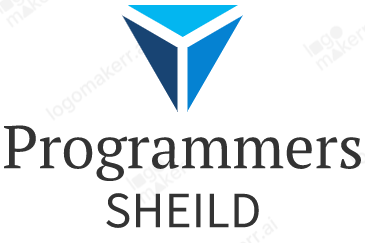Blockchain Technology
In recent years, blockchain technology has emerged as a revolutionary force, transforming industries and revolutionizing digital transactions. At the core of this technological innovation lies decentralized, immutable ledgers, paving the way for increased transparency, security, and efficiency. In this blog post, we will explore the fascinating world of blockchain technology, its inner workings, and how it facilitates smart contracts.
What is Blockchain Technology?
Blockchain technology, a decentralized, distributed ledger system, enables secure and transparent transactions without intermediaries. It serves as a digital database that records and verifies transactions across multiple computers, known as nodes, forming a network.
How Does Blockchain Technology Work?
Let's delve into the step-by-step process of how blockchain technology operates:
Transaction Initiation:
To begin, a user initiates a transaction, such as transferring digital assets, recording information, or executing a smart contract.
Transaction Verification:
Once initiated, the transaction enters the mempool, a pool of unconfirmed transactions. Miners, participants in the blockchain network, compete to validate and verify these transactions.
Block Creation:
Miners collect unconfirmed transactions from the mempool and group them into a block. They engage in mining, a computationally intensive process that involves solving a complex mathematical puzzle.
Proof-of-Work Consensus:
Mining requires finding a unique solution to the mathematical puzzle, demanding substantial computational power. This process, known as Proof-of-Work (PoW), allows the miner who solves the puzzle first to broadcast their solution to the network.
Block Validation:
Other network nodes receive and verify the solution's validity. If correct, the block becomes valid, and the transactions within it are confirmed. The block is then added to the blockchain, creating a permanent record.
Chain Linking:
Each new block references the previous block, forming a chain. This linking mechanism ensures the blockchain's integrity and immutability. Tampering with a block would require modifying subsequent blocks, rendering it computationally infeasible.
Consensus Mechanisms:
Blockchains employ various consensus mechanisms, such as Proof-of-Stake (PoS) or Delegated Proof-of-Stake (DPoS). These mechanisms determine how participants are selected to create new blocks and maintain the network's integrity.
Smart Contracts and Blockchain:
Smart contracts are self-executing contracts with terms and conditions written into code. They can be automatically enforced without intermediaries, reducing fraud risk and enhancing efficiency.
By leveraging blockchain technology, smart contracts can be executed in a decentralized manner. When the specified contract conditions are met, the contract automatically executes, and the outcome is recorded on the blockchain. This opens up possibilities for industries like finance, supply chain management, and decentralized applications (DApps).
Advantages of Blockchain Technology:
The advantages of blockchain technology are given below:
Transparency: Blockchain technology offers transparency by providing a shared ledger accessible to all participants, recording every transaction and its details. This ensures accountability and reduces fraud risk.
Security: The decentralized nature of blockchain makes it highly secure. Each transaction is encrypted and linked to the previous transaction, forming an almost tamper-proof chain. Consensus mechanisms and cryptographic algorithms further enhance security.
Efficiency: Blockchain eliminates intermediaries, streamlining processes and reducing costs. Smart contracts automatically execute predefined conditions, ensuring efficiency and minimizing human error.
Immutable Records: Transactions recorded on the blockchain are nearly impossible to alter or delete, enhancing trust. This immutability is valuable in industries where accurate and permanent records are crucial, such as supply chain management, healthcare, and intellectual property rights.
Decentralization: Operating on a peer-to-peer network, blockchain removes reliance on a central authority, democratizing access, promoting inclusivity, and reducing single points of failure.
Applications of Blockchain Technology:
The applications of blockchain technology are given below:
Financial Services: Blockchain revolutionizes traditional financial systems, providing faster, more secure, and cost-effective transactions. It enables peer-to-peer transfers, cross-border payments, and asset tokenization, fostering financial inclusion and reducing reliance on intermediaries.
Supply Chain Management: Blockchain enhances transparency and traceability in supply chains. Recording transactions, movement, and verification of goods on the blockchain ensure product authenticity, fraud mitigation, and streamlined processes.
Healthcare: Blockchain transforms healthcare systems by securely storing and sharing patient records, ensuring interoperability, and facilitating secure peer-to-peer transactions between providers, insurers, and patients. It streamlines clinical trials, drug traceability, and medical supply chain management.
Intellectual Property: Blockchain protects intellectual property rights, providing immutable proof of ownership and timestamping creations. Artists, musicians, and writers maintain control over their digital assets, ensure fair compensation, and simplify licensing processes.
Decentralized Applications (DApps): Blockchain enables the development of DApps, decentralized applications that operate without a central authority. Powered by smart contracts, they offer enhanced privacy, security, and user control, spanning sectors like finance, gaming, social media, and governance.
Conclusion:
Blockchain technology, with its features of transparency, security, and decentralization, is reshaping industries and empowering individuals worldwide. Embracing blockchain and understanding its potential applications foster innovation, redefine trust, and build a more efficient and equitable future.
As blockchain technology evolves and discovers new use cases, it is crucial for individuals, businesses, and governments to explore its possibilities and collaborate to unlock its full potential. Embracing this transformative technology sets us on a path toward a decentralized and inclusive digital ecosystem.




0 Comments